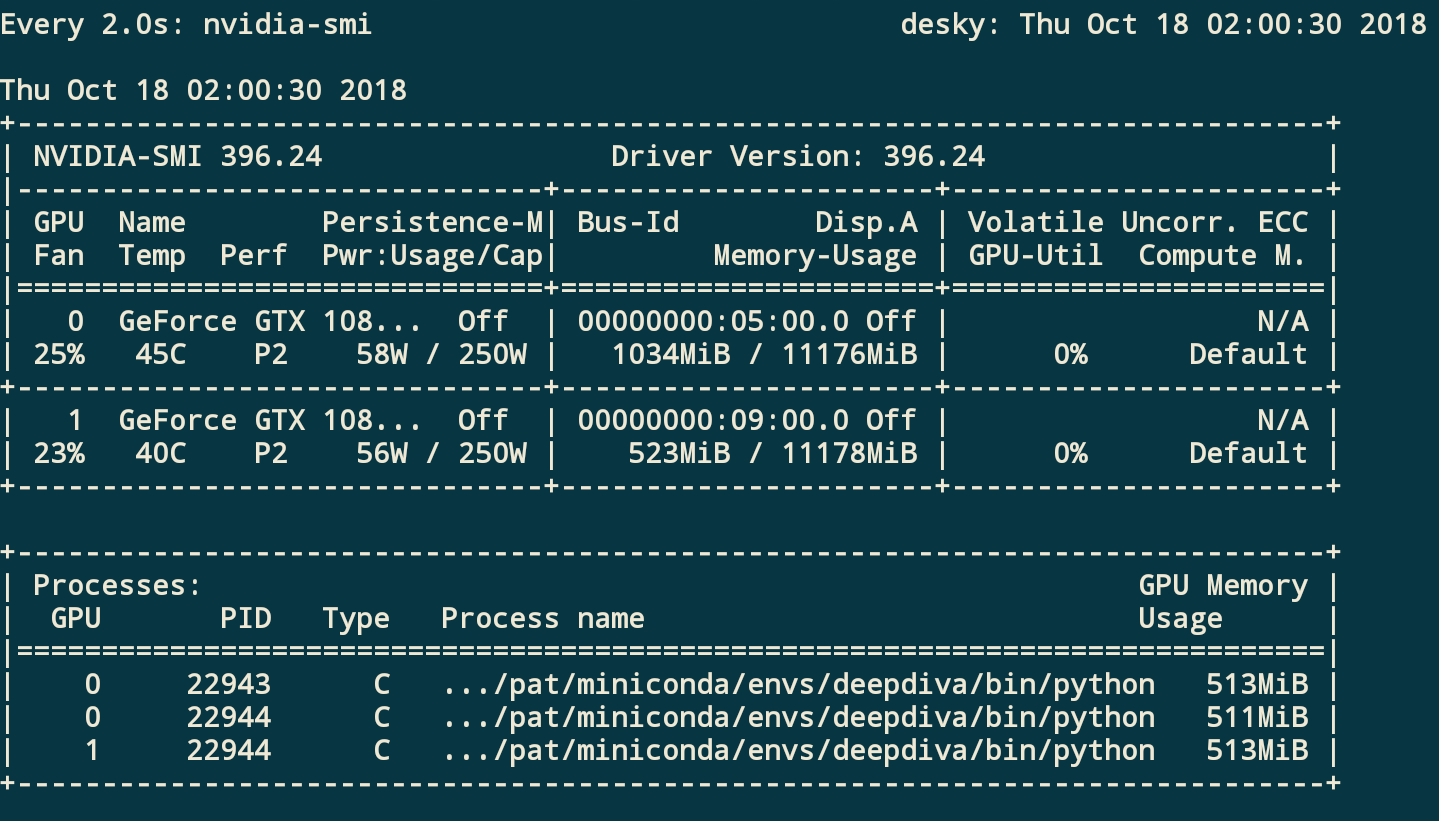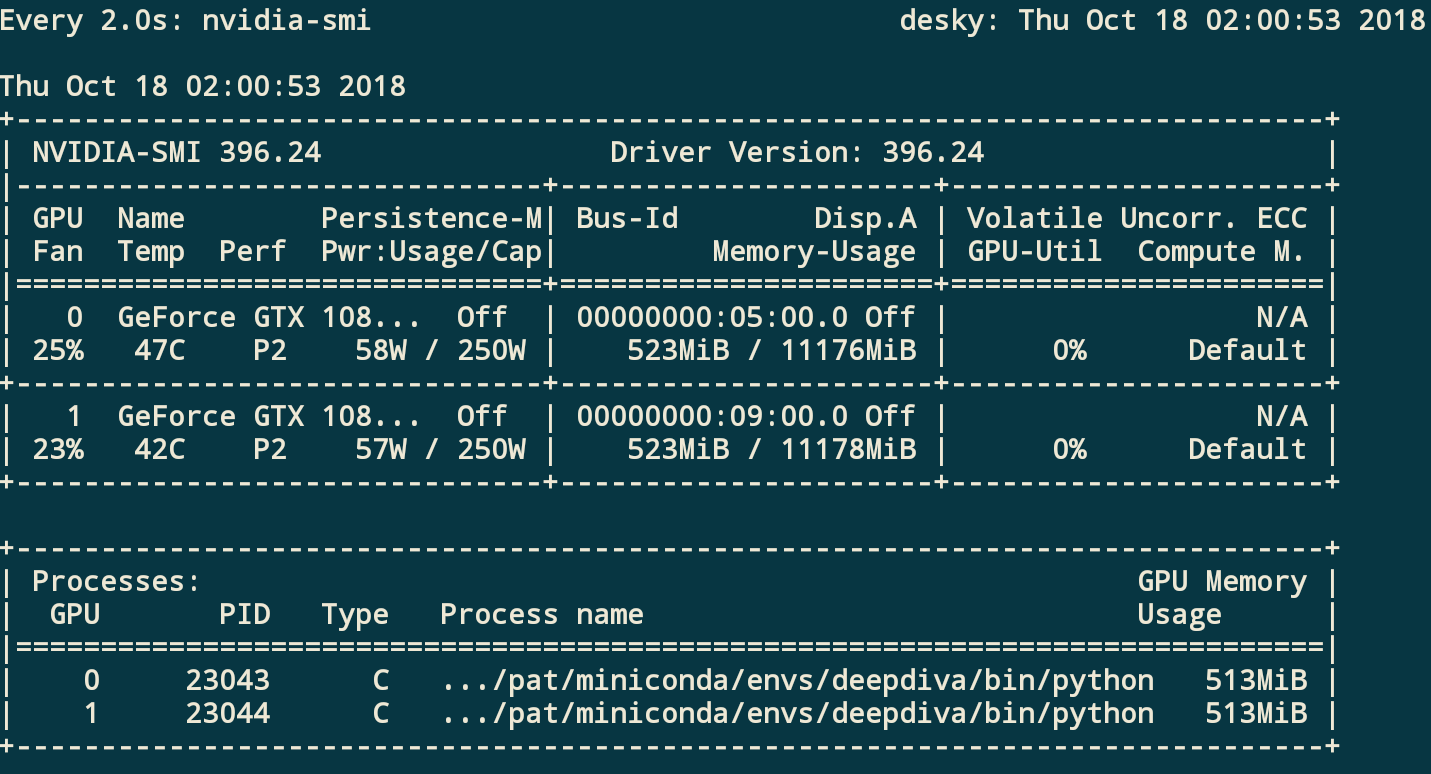I noticed a strange behavior when using multiprocessing. My main process sends data to a queue. Two spawned processes read from the queue and create cuda tensors. If I print the tensors I see the process running on gpu-1 copied to gpu-0 in nvidia-smi. Hence it looks as if I had 3 processes, 2 on gpu-0 and 1 on gpu-1. Two of this 3 processes have the same p-id, namely the p-id of the process running on gpu-1. Now if I print the tensor size or anything else, or if I don’t print anything at all I end up having only 2 processes each running on one gpu. The behavior is reproducible using multiprocessing as well as torch.multiporcessing. See code below for reproduction.
Does anyone have an idea why this is?
nvidia-smi output when printing tensor:
nvidia-smi output otherwise:
Code:
import torch
import torch.multiprocessing as mp
def run(q, dev):
t = torch.tensor([1], device=dev)
for data in iter(q.get, None):
new_t = torch.tensor([data], device=dev)
t = torch.cat((t, new_t), dim=0)
# Causes the Copy
print(t)
# Any of the following doesn't causes the copy
print(t.size())
print('t')
continue
q.put(None)
if __name__ == '__main__':
ctx = mp.get_context('spawn')
q = ctx.Queue()
devices = [
torch.device('cuda:{}'.format(i))
for i in range(torch.cuda.device_count())
]
processes = [
ctx.Process(target=run, args=(q, dev))
for dev in devices
]
for pr in processes:
pr.start()
for d in range(1, 1000000):
q.put(d)
q.put(None)
for pr in processes:
pr.join()

